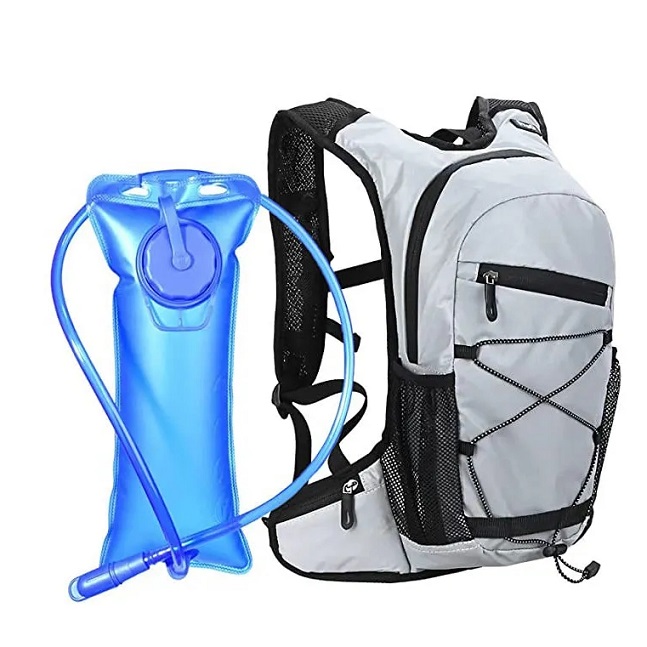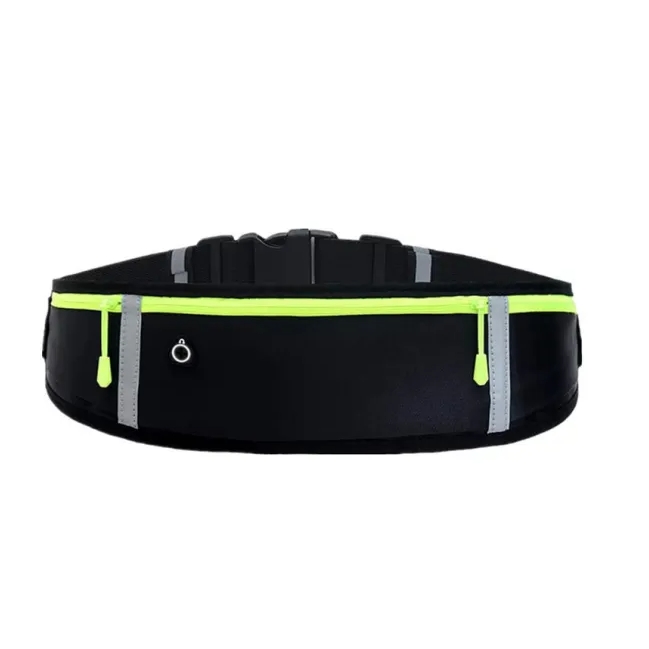The Ultimate Guide to Running Bag Series in the Luggage Industry
The luggage industry has evolved significantly, with specialized bags designed for various activities. Among these, running bags have gained immense popularity due to their functionality, comfort, and style. Whether you're a seasoned marathon runner or a casual jogger, having the right running bag can make a world of difference.
What Are Hydration Packs?
Hydration packs are specialized running bags designed to carry water and other essentials while you run. They are particularly popular among long-distance runners and trail runners who need to stay hydrated over extended periods. These hydration packs typically feature a water bladder, a hose, and a bite valve, allowing you to drink on the go without breaking your stride.

Key Features
Water Bladder: The core component of a hydration pack, usually made from BPA-free materials, with capacities ranging from 1 to 3 liters.
Hose and Bite Valve: Allows for easy access to water without stopping.
Storage Compartments: Additional pockets for carrying snacks, keys, phones, and other essentials.
Adjustable Straps: Ensure a snug fit, minimizing bounce and discomfort.
Benefits
Convenience: Easy access to water without stopping.
Hands-Free: Allows you to keep your hands free for balance and movement.
Versatility: Suitable for various outdoor activities beyond running, such as hiking and cycling.
Popular Brands
CamelBak: Known for their durable and innovative hydration packs.
Osprey: Offers a range of hydration packs with excellent ergonomic designs.
Nathan: Specializes in running-specific hydration packs with thoughtful features.
2. Waist Packs
What Are Waist Packs?
Waist packs, also known as running belts or fanny packs, are compact running bags worn around the waist. They are ideal for runners who prefer to carry minimal gear, such as keys, phones, and energy gels. Waist packs are designed to be lightweight and unobtrusive, ensuring they don't interfere with your running form.
Key Features
Compact Design: Small and lightweight, designed to carry essentials without adding bulk.
Adjustable Waistband: Ensures a secure fit, preventing the pack from bouncing during runs.
Multiple Compartments: Organized storage for small items like keys, cards, and phones.
Reflective Elements: Enhances visibility during low-light conditions.
Benefits
Minimalist: Perfect for runners who prefer to travel light.
Comfortable: Designed to stay in place without causing discomfort.
Versatile: Can be used for various activities, including walking, cycling, and travel.
Popular Brands
FlipBelt: Known for their seamless design and multiple size options in waist packs.
SPIbelt: Offers adjustable waist packs with expandable pockets.
Nathan: Provides waist packs with additional features like water bottle holders.
3. Backpack-Style Running Bags
What Are Backpack-Style Running Bags?
Backpack-style running bags are larger than waist packs and hydration packs, offering more storage capacity. They are designed for runners who need to carry additional gear, such as extra clothing, shoes, or even a laptop. These backpack-style running bags are typically worn on the back and feature adjustable straps for a secure fit.
Key Features
Ample Storage: Multiple compartments for organizing gear, including a main compartment, front pocket, and side pockets.
Adjustable Straps: Shoulder straps and chest straps for a secure and comfortable fit.
Ventilated Back Panel: Enhances airflow, reducing sweat buildup.
Reflective Details: Improves visibility during early morning or late evening runs.
Benefits
Capacity: Ideal for runners who need to carry more gear.
Comfort: Designed to distribute weight evenly, reducing strain on the back and shoulders.
Versatility: Suitable for commuting, travel, and other outdoor activities.
Popular Brands
Osprey: Known for their durable and ergonomic backpack-style running bags.
Deuter: Offers running-specific backpack-style running bags with excellent ventilation systems.
Salomon: Specializes in trail running backpack-style running bags with innovative features.
4. Armband Bags
What Are Armband Bags?
Armband bags are small, lightweight running bags designed to be worn on the upper arm. They are perfect for runners who want to carry a phone, keys, and a few small items without the bulk of a waist pack or backpack-style running bag. Armband bags are particularly popular among urban runners and those who prefer to keep their essentials within easy reach.
Key Features
Compact Design: Fits snugly on the arm, carrying only the essentials.
Adjustable Straps: Ensures a secure fit for different arm sizes.
Touchscreen Compatibility: Allows you to use your phone without removing it from the bag.
Reflective Elements: Enhances visibility during low-light conditions.
Benefits
Lightweight: Minimalist design that doesn't add extra weight.
Accessibility: Easy access to your phone and other small items.
Comfortable: Designed to stay in place without causing irritation.
Popular Brands
SPIbelt: Offers armband bags with expandable pockets.
Tune Belt: Known for their durable and comfortable armband bags.
Belkin: Provides armband bags with additional features like headphone ports.
5. Minimalist Running Belts
What Are Minimalist Running Belts?
Minimalist running belts are the most compact and lightweight option among running bags. They are designed for runners who want to carry only the bare essentials, such as a key, a card, or a small phone. These minimalist running belts are typically worn around the waist and are almost unnoticeable during a run.

Key Features
Ultra-Lightweight: Designed to be as light as possible, adding minimal weight to your run.
Sleek Design: Fits snugly around the waist, without bouncing or shifting.
Essential Storage: Usually features a single pocket for keys, cards, or a small phone.
Reflective Details: Enhances visibility during low-light conditions.
Benefits
Minimalist: Perfect for runners who prefer to carry as little as possible.
Comfortable: Designed to be unobtrusive, allowing for a natural running experience.
Versatile: Can be used for various activities, including walking, cycling, and travel.
Popular Brands
FlipBelt: Known for their seamless and minimalist running belts.
SPIbelt: Offers adjustable and expandable minimalist running belts.
Nathan: Provides minimalist running belts with additional features like water bottle holders.
Conclusion
Choosing the right running bag depends on your specific needs, preferences, and the type of running you do. Whether you opt for a hydration pack for long-distance runs, a waist pack for minimal gear, a backpack-style running bag for extra storage, an armband bag for easy access, or a minimalist running belt for the bare essentials, there's a perfect option out there for you. By understanding the features and benefits of each type, you can make an informed decision that enhances your running experience.
